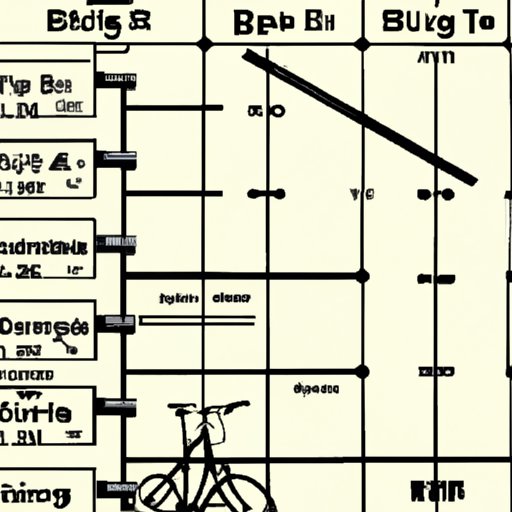Introduction
Bike sizing, also known as bike fitting, is the process of determining the appropriate size of a bike for an individual rider. It involves taking into account the rider’s height, inseam length, arm length and other body proportions. Knowing the correct size of a bike is essential for both comfort and safety while riding.

Visual Identification of Bike Sizes
The first step in telling the size of a bike is to identify the type of bike, as different bikes have different sizing systems. Road bikes and mountain bikes usually come with their own specific sizes, while hybrid bikes generally use the same size system as road bikes.
Once you know the type of bike, look for any manufacturer markings that may indicate the size of the bike. Different manufacturers use different sizing systems, so it’s important to familiarize yourself with the sizing system being used.
If there are no markings or if you’re unsure what the markings mean, you can compare the bike to other bikes to get an idea of its size. The easiest way to do this is to sit on the bike and compare your leg extension to other riders of the same height. If your legs are more extended than theirs, then the bike is likely too big for you.

Using a Bike Size Chart
Another way to determine the size of a bike is to use a bike size chart. These charts provide a range of measurements that correspond to different sizes of bikes. They are available online and in many bike shops.
When using a bike size chart, you need to measure your height and inseam length accurately. To measure your height, stand up straight and measure the distance from the floor to the top of your head. To measure your inseam, stand with your feet shoulder-width apart and measure the distance from the floor to the top of your inner thigh.
Once you have your measurements, locate them on the bike size chart. The chart will give you a range of bike sizes that would be appropriate for your height and inseam length.

Measuring the Seat Tube Length
Another way to tell the size of a bike is to measure the seat tube length. The seat tube length is the distance from the center of the bottom bracket to the top of the seat tube. To measure the seat tube length, you will need a tape measure and a level surface.
Start by placing the level surface against the seat tube and extending the tape measure from the center of the bottom bracket to the top of the seat tube. Then, measure the distance from the center of the bottom bracket to the top of the seat tube and record the measurement.
Once you have the seat tube length measurement, you can convert it to a bike size using a conversion chart. These charts are available online and in many bike shops.
Determining Frame Geometry
Frame geometry is another way to tell the size of a bike. Frame geometry refers to the angles and lengths of the tubes that make up the frame of the bike. Different frame geometries are designed for different types of riding, so it’s important to choose a frame geometry that is suited to your riding style.
To determine the frame geometry of a bike, look for the manufacturer’s markings on the frame. These markings will indicate the angles and lengths of the tubes that make up the frame. You can then compare these numbers to other frames to get an idea of the size of the bike.
Consulting a Professional Bicycle Fitter
Finally, if you’re still unsure about the size of a bike, you can seek professional advice from a qualified bicycle fitter. A bicycle fitter will be able to take precise measurements and recommend the best size of bike for you. They can also help you adjust the bike to ensure that it fits you properly.
Finding a qualified bicycle fitter can be difficult, so it’s important to do your research before choosing one. Look for bike fitters who have been certified by a reputable organization, such as the International Bicycle Fitting Institute (IBFI).
Conclusion
Knowing how to tell the size of a bike is important for both comfort and safety while riding. There are several ways to determine the size of a bike, including visual identification, using a bike size chart, measuring the seat tube length and determining frame geometry. If you’re still unsure, you can consult a qualified bicycle fitter for professional advice.


